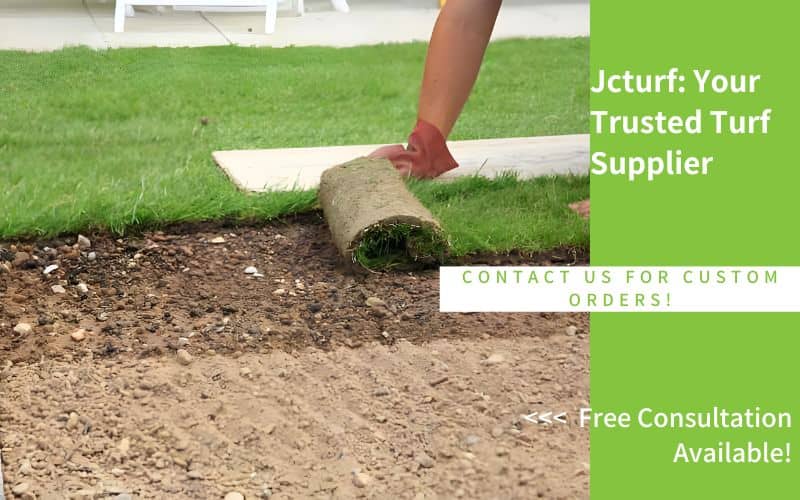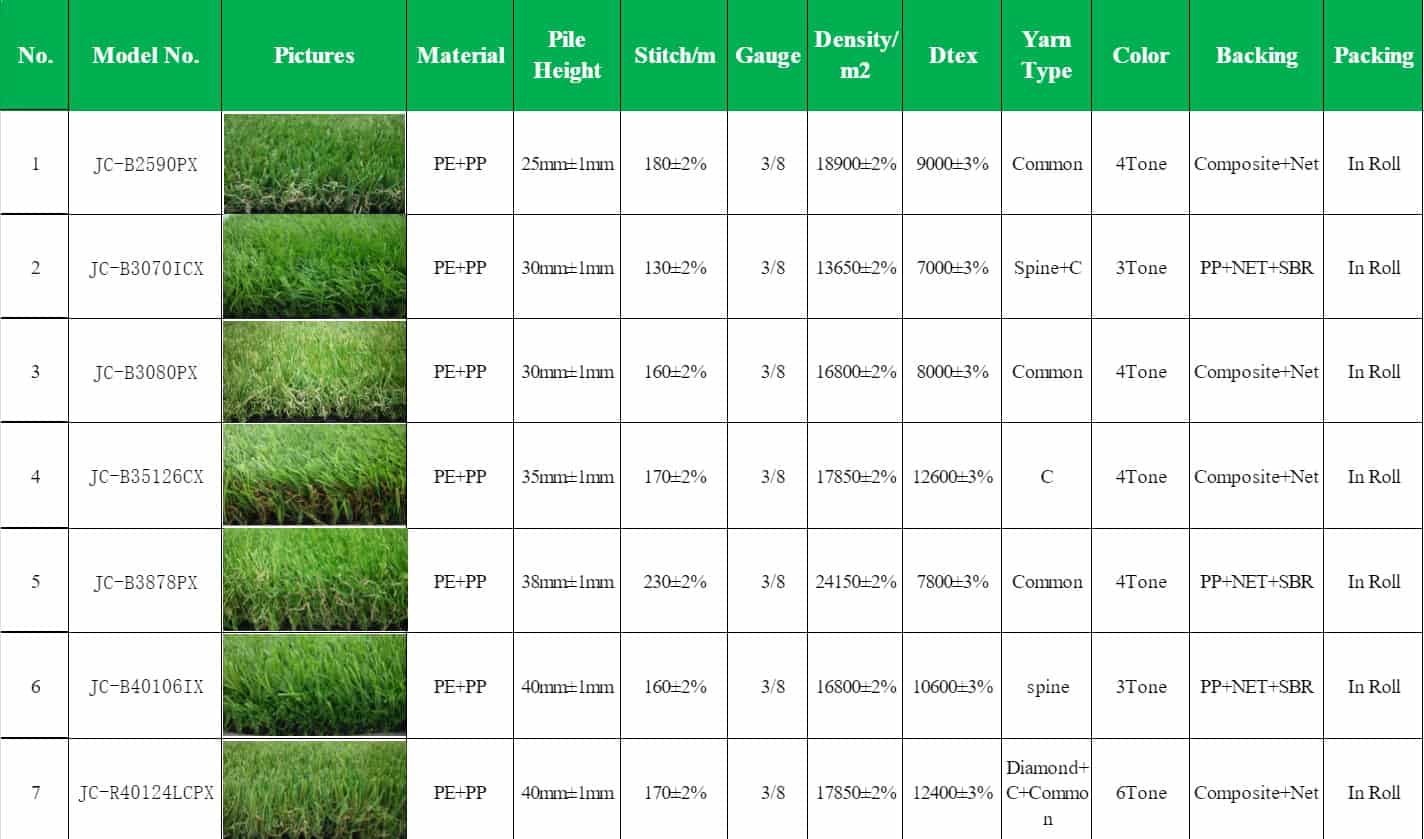Yes, artificial turf can be installed on a sand base, especially if sharp sand is used and compacted well. However, sand on its own is not always the best choice, as it may shift and lead to an unstable surface for your artificial grass installation.
Choosing the best base under your artificial grass can make all the difference for drainage, weed control, and a level surface. In this guide, we’ll answer your main questions about laying artificial turf on sand, compare popular base options, and walk you through practical steps and expert advice. Whether you’re planning a small garden, a backyard upgrade, or a large sports field, you’ll find real solutions to help you get professional, long-lasting results.
How to Lay Artificial Grass on Sand?
Laying artificial grass on sand requires careful preparation and precise steps to achieve a stable, attractive, and long-lasting result. The key to success lies in creating a well-drained, level, and compact base for the artificial grass. Follow these instructions to ensure the best possible outcome for your project.
Step 1: How do you prepare ground for artificial grass?
The first step is to remove any existing lawn, weeds, debris, and topsoil that could decompose. This ensures a clean surface and eliminates potential obstacles that may affect the stability of your artificial grass.
- Clear the Surface: Remove all grass, weeds, and debris.
- Excavate the Area: Dig to a depth of about 2-3 inches using appropriate tools. This provides space for the sand base and ensures proper drainage.
Step 2: Install a Weed Barrier
To prevent weed growth beneath your artificial grass, lay a weed barrier across the entire turf area. This is a crucial step to maintain the longevity of your lawn.
- Weed Barrier: Install a geotextile fabric or apply a weed killer to block any regrowth underneath the turf.
Step 3: How to compact sand for artificial grass?
Next, pour a layer of sharp sand or paver sand over the landscape. This helps with leveling and drainage. Use a rake to spread the sand evenly and ensure a smooth surface.
- Spread the Sand: Pour about 1–2 inches of sand over the prepared area.
- Level and Compact: Use a rake to distribute the sand and a plate compactor or tamper to ensure the sand is compacted tightly. This step is vital to avoid future dips or uneven surfaces.
Step 4: Lay the Artificial Turf
Once the sand is level and compact, it’s time to roll out the artificial grass. Position it carefully along the perimeter of the area, ensuring the grass blades face the same direction for a uniform appearance.
- Roll and Position the Turf: Lay out the artificial grass and ensure it fits around the edges, pavers, and any other landscaping features.
- Trim the Edges: Use the right tools to trim the turf to fit the edges and contours of the area.
Step 5: Secure the Turf
To keep the artificial grass in place, secure the edges with landscaping nails or adhesive. This will ensure that the turf doesn’t shift over time.
- Edge Security: Use landscaping nails or adhesive to secure the perimeter.
- Seam Joining: If your turf has seams, join them with proper seam tape or adhesive for a seamless finish.
Step 6: Brush and Apply Infill
Brushing the turf with a stiff broom helps raise the grass blades and gives the artificial grass a more natural look. Infill also helps with weight, drainage, and maintaining the turf’s realistic appearance.
- Brush the Turf: Use a stiff broom to brush the artificial grass and raise the blades.
- Distribute Infill: Spread an even layer of infill (e.g., silica sand) to provide weight and stability to the grass.
Step 7: Final Touches
Finally, lightly water the turf to settle the infill. This step also helps to further secure the turf in place.
- Water the Turf: Lightly water the artificial grass to settle the infill and enhance its appearance.
By following these step-by-step instructions, you can successfully install artificial grass on sand. With careful preparation and attention to detail, you can achieve a professional-looking lawn with minimal maintenance, ideal for small backyards or high-traffic areas.
Key Tips for Successfully Installing Artificial Turf on Sand
1. Proper Compaction: Compaction is crucial for creating a stable base. Loose sand can shift over time, causing an unstable surface. Use a plate compactor or hand tamper to compact the sand in multiple passes, checking the level to maintain consistency throughout the area.
2. Choosing the Right Type of Sand: Use sharp sand as the base material, as it compacts well and provides excellent drainage. Avoid fine sand (e.g., builder’s sand), which can block drainage and cause surface instability or weed growth.
3. Installing Edge Restraints: Edge restraint systems (timber, steel, composite) are necessary to prevent the sand from shifting at the perimeter. Install these around the turf area before laying the artificial grass for a clean, stable transition between the turf and surrounding surfaces.
4. Ensuring Proper Drainage: Good drainage is essential to prevent water pooling. Make sure the subbase is slightly sloped away from structures, and use geotextile fabric for additional drainage support. Drainage issues can lead to rapid turf deterioration if ignored.
5. Excavation Depth: Excavate at least 3-4 inches of material, including natural grass, sod, or topsoil, to create a stable foundation. Failing to do so can result in uneven surfaces and poor drainage.
6. Installing the Weed Barrier: Install a geotextile weed barrier after compacting the base. This step helps prevent weeds from growing through the turf and prolongs the lifespan of your artificial lawn.
7. Correct Seam Alignment: Proper seam alignment is essential for a seamless, professional-looking lawn. Ensure that the seams are aligned, pulled taut, and secured with strong landscape adhesive to avoid gaps or visible patches.
8. Applying Infill: Infill materials like silica sand or paver sand are important to maintain the structure and appearance of the turf. Brush infill into the blades of grass after installation to provide support and prevent matting.
9. Securing the Edges: To prevent shifting or lifting over time, secure the turf at the perimeter using landscape nails or paver edging. This ensures that the turf stays in place through different weather conditions and usage.
What Is the Best Base Material for Installing Artificial Grass: Sand or Other Aggregates?
Choosing the right base material is crucial for the stability, drainage, and long-term performance of artificial grass. The most common base materials include sharp sand, MOT Type 1, compacted aggregates, and crushed granite.
Sharp Sand: A Simple and Economical Option
Sharp sand is often favored for its ease of leveling and quick compaction, making it suitable for small backyards or residential landscapes with light foot traffic. However, it can shift over time, leading to visible seams or uneven surfaces. It also doesn’t effectively prevent weed growth and can hinder drainage during heavy rains.
Limitations of Sharp Sand
- Shifting: Over time, sharp sand can settle or move, causing an uneven surface.
- Weed Growth: Sharp sand is less effective at preventing weeds.
- Drainage Issues: It may cause drainage problems during heavy rainfall, leading to water pooling.
Aggregates: A More Stable and Well-Draining Option
In contrast, aggregates like MOT Type 1, crushed granite, or decomposed granite create a more stable, well-draining foundation. These materials compact tightly to prevent shifting, resist settling, and promote effective drainage, making them ideal for larger areas or those with higher foot traffic.
Advantages of Using Aggregates
- Superior Compaction: Aggregates provide a solid, stable base that resists settling.
- Effective Drainage: They allow water to drain efficiently, preventing pooling.
- Weed Resistance: Compact aggregates discourage weed growth, keeping the surface clean.
Best Use Cases for Aggregates
- Large Areas: Ideal for front yards or commercial installations.
- High-Traffic Zones: Best for areas with frequent use, preventing rutting and uneven surfaces.
- Heavy Rainfall: Aggregates are a better option for areas prone to heavy rain or with clay soil.
How to Choose the Right Base Material
When deciding between sharp sand and aggregates, consider these factors:
- Drainage Needs: Particularly important for areas with heavy rainfall or poor drainage.
- Climate: Different climates affect the performance of the materials.
- Foot Traffic: High-traffic areas need a more durable base.
- Budget: Sharp sand is more cost-effective, but aggregates provide better long-term performance.
What’s the best sand for under artificial grass?
The best sand for under artificial grass is sharp sand. It compacts well, provides good drainage, and creates a stable base for the turf. Avoid fine sand, like builder’s sand, as it can cause drainage problems.
Building a Sports Field with Sharp Sand: Benefits and Construction Process
Constructing a large-scale sports field with sharp sand provides a stable, well-draining foundation ideal for supporting artificial turf. Sharp sand is preferred due to its excellent drainage properties, resistance to compaction, and ability to maintain a level, firm surface under heavy use, such as in sports fields.
Construction Process
Excavation and Base Preparation: The existing topsoil or natural grass is excavated to a depth of 3-4 inches. A compacted aggregate or crushed rock subbase is laid beneath the sharp sand to support the load and provide additional drainage.
Sharp Sand Layer: A thick layer of sharp sand (typically 25–50 mm) is spread over the base. Sharp sand, with its angular particles, prevents compaction, allowing water to drain efficiently and ensuring a stable, level surface for artificial turf.
Geotextile Fabric: A weed barrier made of geotextile fabric is placed between the subbase and sharp sand to prevent weed growth while maintaining permeability for water drainage.
Artificial Turf Installation: After compaction, the artificial grass is laid over the prepared sand base, with seams properly aligned and secured. The turf is then brushed with infill material such as silica sand to support the grass blades and maintain the surface.
Key Benefits of Sharp Sand for Sports Fields
Superior Drainage: Sharp sand allows water to drain quickly, preventing puddles and ensuring a consistent surface, even during heavy rainfall or after extensive use.
Stable Surface: The angular shape of sharp sand particles provides a firm base, preventing shifting and settling of the turf. This helps maintain a level playing surface, which is essential for sports performance.
Low Maintenance: Sports fields with sharp sand bases require less frequent repairs or compaction compared to those built on native soil or clay. The reduced need for maintenance, such as aeration or topdressing, lowers long-term upkeep costs.
Durability: The combination of sharp sand, aggregate layers, and proper compaction results in a durable foundation that can withstand heavy use and prevent issues like rutting or surface instability.
Performance Compared to Traditional Soil Bases
Sharp sand-based fields significantly outperform those constructed on traditional soil or clay bases. Unlike soil, which can hold water and cause uneven settlement, sharp sand ensures consistent drainage, a stable surface, and reduced infill displacement. Fields built on sharp sand provide better playability and performance, as they minimize the risk of waterlogging and maintain a uniform playing surface.
In contrast, soil bases, particularly those with high clay content, are prone to water retention, which can create puddles and unstable surfaces. Over time, this can compromise the integrity of the turf and infill, leading to increased maintenance needs.
Your Trusted Artificial Turf Supplier for a Durable and Low-Maintenance Lawn
Installing artificial turf on a sharp sand base ensures a stable, well-draining foundation with minimal maintenance. Proper preparation, such as compaction and the use of a weed barrier, results in a durable and professional finish suitable for both residential lawns and sports fields.
For high-quality artificial grass and expert guidance, JCturf is your trusted artificial turf supplier. We provide premium synthetic turf solutions tailored to various needs, ensuring lasting durability and excellent performance. Let us help you bring your artificial grass project to life with our reliable products and expertise. Contact us today!


